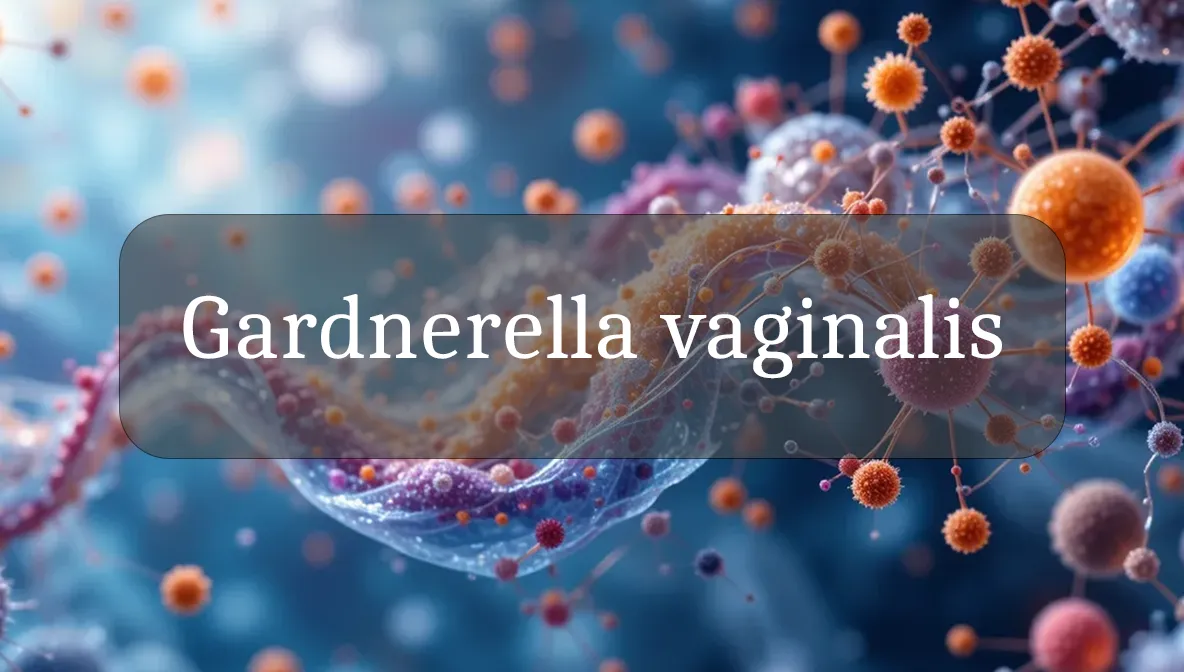Vaginal Microbiome’s Complex Resident
Gardnerella vaginalis is like a subtle influencer in the vaginal microbiome, a bacterium that’s often present in small amounts but can disrupt balance when it overgrows. As a key player in vaginal health, it’s a focus for health-conscious folks aiming to maintain wellness and prevent discomfort. Understanding G. vaginalis can empower you to make choices that support a healthy vaginal ecosystem. Let’s explore what G. vaginalis is, why it matters, and how you can manage its role for daily vitality!
Chemical Identity and Type
Gardnerella vaginalis is a Gram-variable, rod-shaped bacterium, often appearing as small, pleomorphic rods. It’s a facultative anaerobe, thriving in low-oxygen environments like the vaginal mucosa. Found naturally in the vaginal microbiome of some women, it adheres to epithelial cells, forming biofilms that can protect it from immune responses. Think of it as a clingy resident in the vaginal community, usually harmless but capable of causing imbalance under certain conditions.
Biological Role and Benefits
G. vaginalis is a commensal bacterium in low numbers, with a limited but notable role in vaginal health:
- Microbiome Diversity: In small amounts, it contributes to the vaginal microbiome’s diversity, coexisting with beneficial Lactobacillus species.
- Ecological Balance: It may play a minor role in maintaining the vaginal ecosystem by interacting with other microbes, though its benefits are less pronounced than those of Lactobacillus.
However, G. vaginalis is best known for its association with bacterial vaginosis (BV) when it overgrows, shifting the microbiome away from Lactobacillus dominance, making balance critical.
Dietary or Natural Sources
G. vaginalis is a naturally occurring bacterium in the vaginal microbiome and not sourced from food. You can support a healthy vaginal microbiome to limit G. vaginalis overgrowth with these nutrient-rich choices:
- Probiotic-Rich Foods: Yogurt, kefir, and fermented foods (e.g., sauerkraut, kimchi) with Lactobacillus strains promote a Lactobacillus-dominant vaginal microbiome, suppressing G. vaginalis.
- Prebiotic-Rich Foods: Garlic, onions, bananas, and asparagus feed beneficial bacteria, supporting vaginal health.
- Vitamin D-Rich Foods: Fatty fish, egg yolks, or fortified foods (or sunlight exposure) support immune function, helping regulate vaginal microbes.
- Antioxidant-Rich Foods: Berries, leafy greens, and green tea reduce inflammation, fostering a balanced vaginal environment.
A balanced diet supports Lactobacillus dominance, keeping G. vaginalis in check.
Signs of Imbalance or Dysfunction
An overgrowth of G. vaginalis (often linked to bacterial vaginosis, affecting 20–40% of women globally) may show up as:
- Bacterial Vaginosis (BV): Thin, grayish-white vaginal discharge with a fishy odor, often worse after intercourse; itching or burning may occur.
- Vaginal Discomfort: Mild irritation or inflammation of the vaginal mucosa.
- Increased Infection Risk: BV raises the risk of pelvic inflammatory disease, preterm birth, or sexually transmitted infections (e.g., HIV, chlamydia).
- Recurrent Symptoms: BV recurs in 30–50% of women within 3–12 months after treatment, indicating persistent G. vaginalis biofilms.
- Rare Systemic Issues: In immunocompromised individuals, G. vaginalis may cause bacteremia or urinary tract infections, though this is uncommon.
These symptoms can have many causes, so consult a healthcare provider if they persist to explore vaginal or microbial issues.
Supporting Optimal Levels or Function
To maintain a balanced G. vaginalis population and promote vaginal health, try these evidence-based tips:
- Eat Probiotic Foods: Include yogurt or fermented foods with Lactobacillus strains (e.g., L. crispatus, L. rhamnosus) to support a healthy vaginal microbiome and suppress G. vaginalis.
- Practice Good Hygiene: Clean the external genital area with mild, unscented soap; avoid douching, which disrupts Lactobacillus and promotes G. vaginalis overgrowth.
- Wear Breathable Clothing: Choose cotton underwear and avoid tight clothing to reduce moisture, discouraging G. vaginalis growth.
- Limit Risk Factors: Avoid frequent unprotected intercourse with multiple partners, smoking, or excessive sugar intake, which can disrupt vaginal pH and fuel BV.
- Consider Probiotics: Vaginal or oral Lactobacillus probiotics may reduce BV recurrence, but consult a healthcare provider for evidence-based options.
Small, consistent habits foster a Lactobacillus-dominant vaginal microbiome, keeping G. vaginalis in balance.
Safety, Interactions, and Precautions
G. vaginalis is a natural part of the vaginal microbiome but poses risks when overgrown, so consider these factors:
- Bacterial Vaginosis Triggers: Hormonal changes (e.g., menstruation, pregnancy), douching, or antibiotic use can reduce Lactobacillus and promote G. vaginalis overgrowth.
- Antibiotic Resistance: G. vaginalis biofilms show resistance to common BV treatments like metronidazole (20–30% failure rate). Clindamycin or tinidazole may be alternatives, but recurrence is common.
- Pregnancy Risks: BV caused by G. vaginalis increases preterm birth risk (2–3 times higher). Pregnant women with symptoms should seek prompt treatment.
- Sexual Transmission: While not a classic STI, G. vaginalis may be transmitted via sexual activity, especially in women with female partners. Condom use may reduce risk.
- Treatment Side Effects: BV treatments can cause nausea or yeast infections as a side effect. Follow medical guidance to minimize complications.
Preventing G. vaginalis overgrowth involves microbiome support, hygiene, and cautious antibiotic use.
Fun Fact
Did you know G. vaginalis can form sticky biofilms that act like a microbial fortress? These films make it cling to vaginal cells, but Lactobacillus can outcompete it, keeping your vaginal ecosystem in harmony!
Citations
- National Institutes of Health (NIH): Bacterial Vaginosis and Vaginal Microbiome.
- Centers for Disease Control and Prevention (CDC): Bacterial Vaginosis Facts.
- Mayo Clinic: Bacterial Vaginosis Symptoms and Treatment.
- Cleveland Clinic: Nutrition and Women’s Health.
- World Health Organization (WHO): Diet and Reproductive Health Guidelines.

